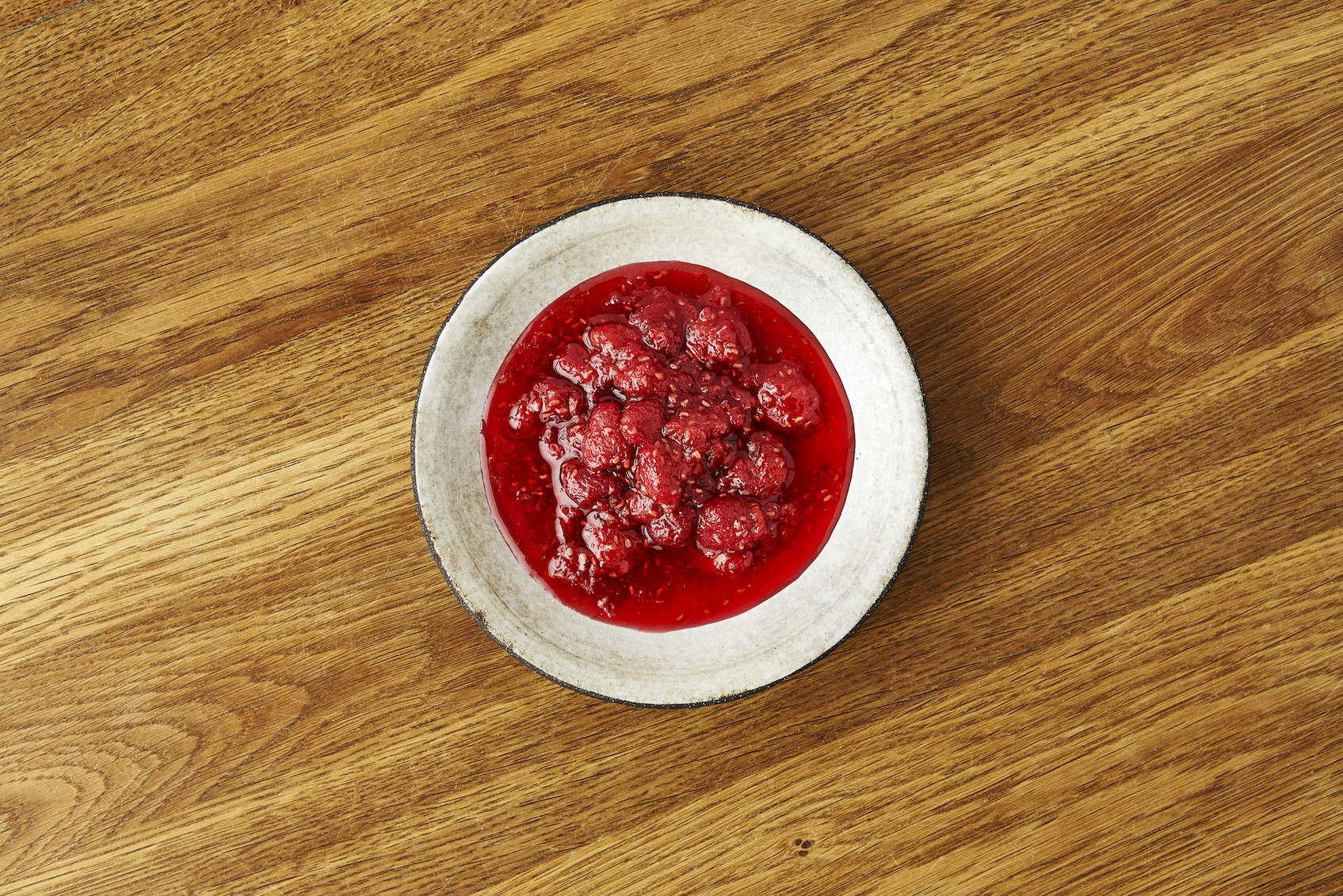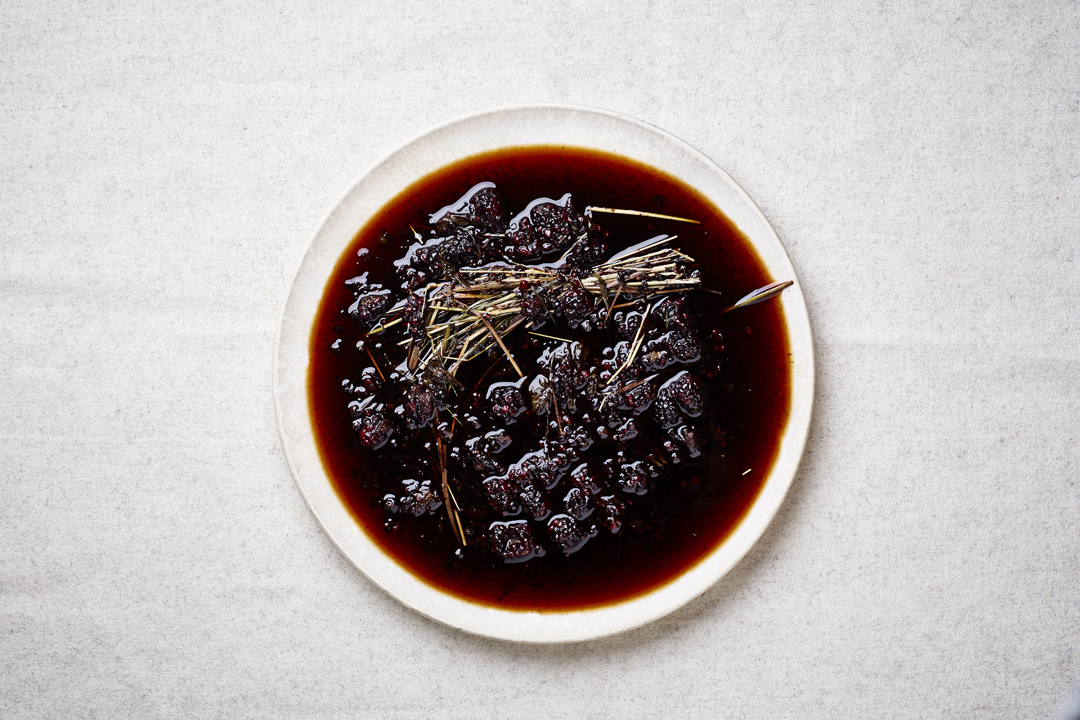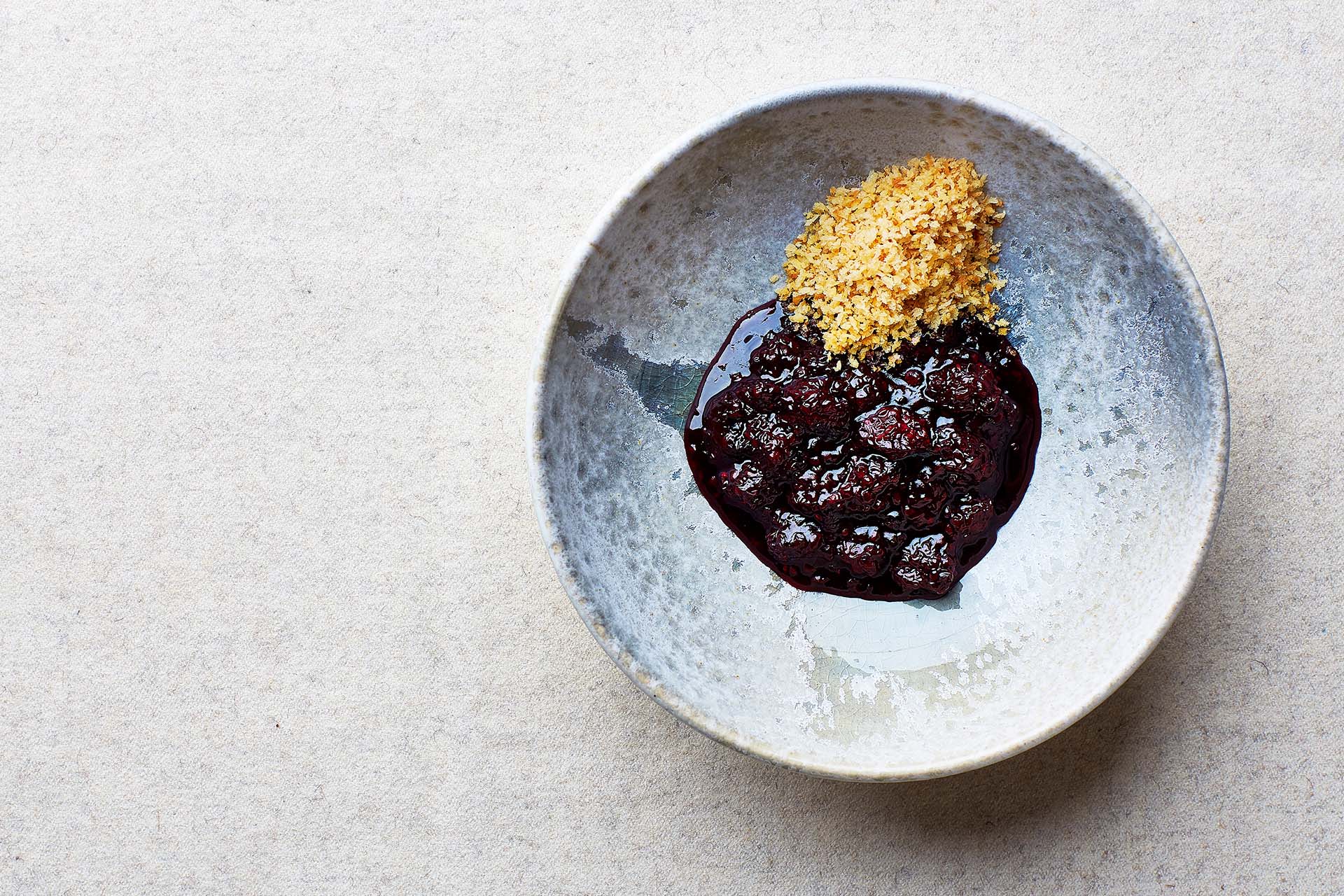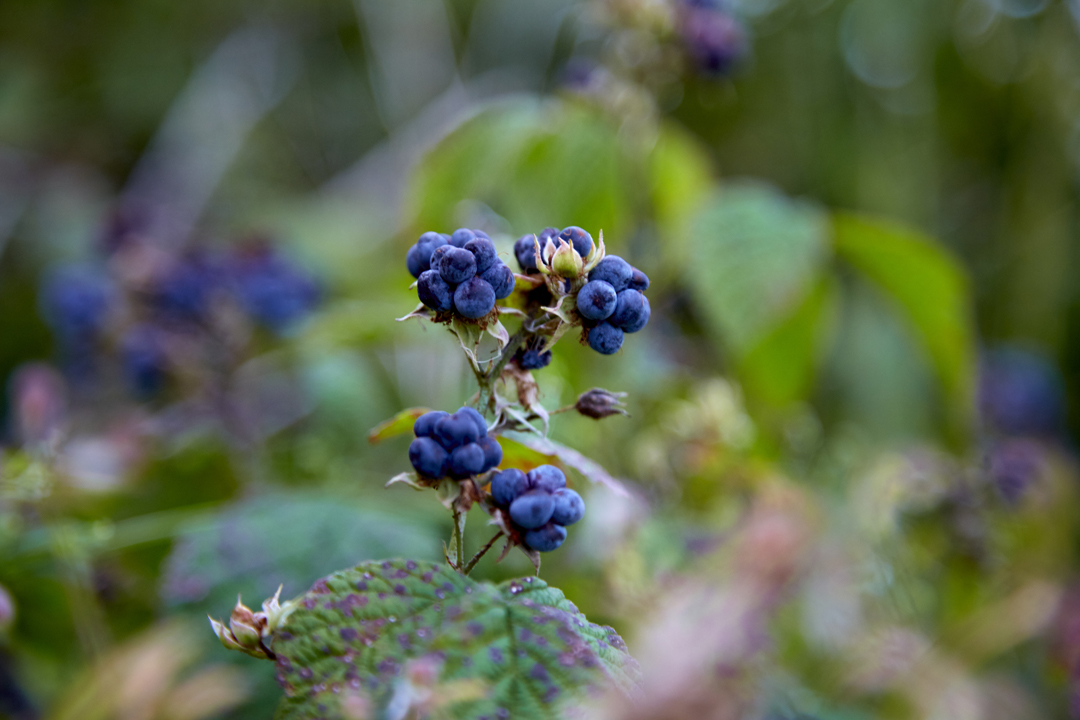
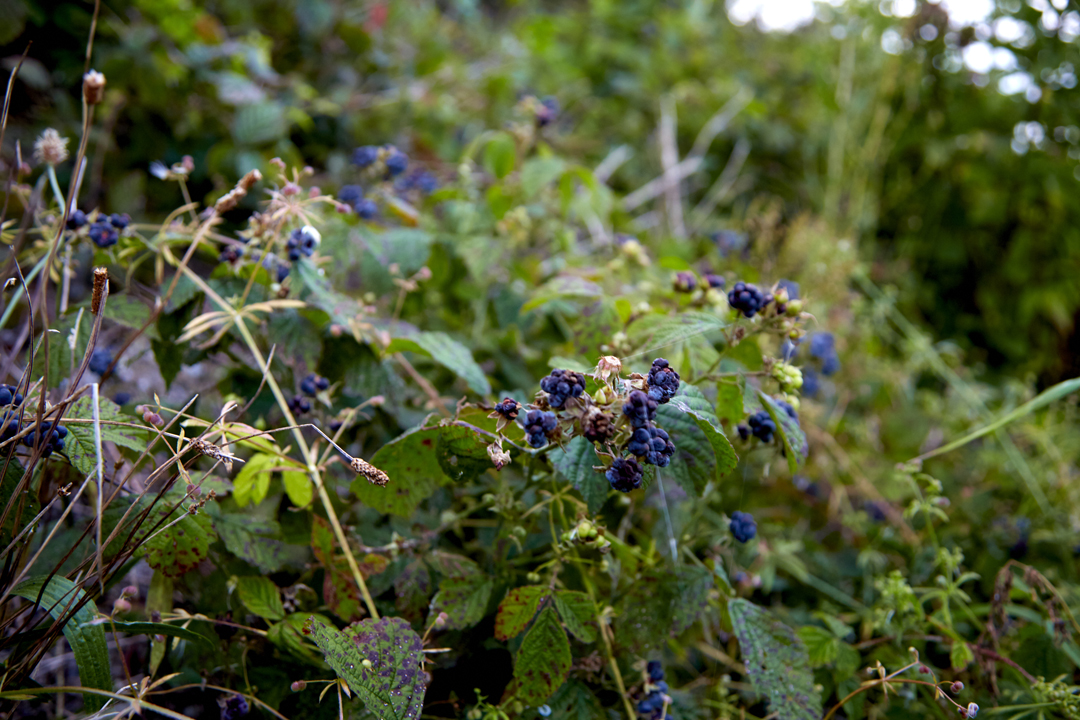
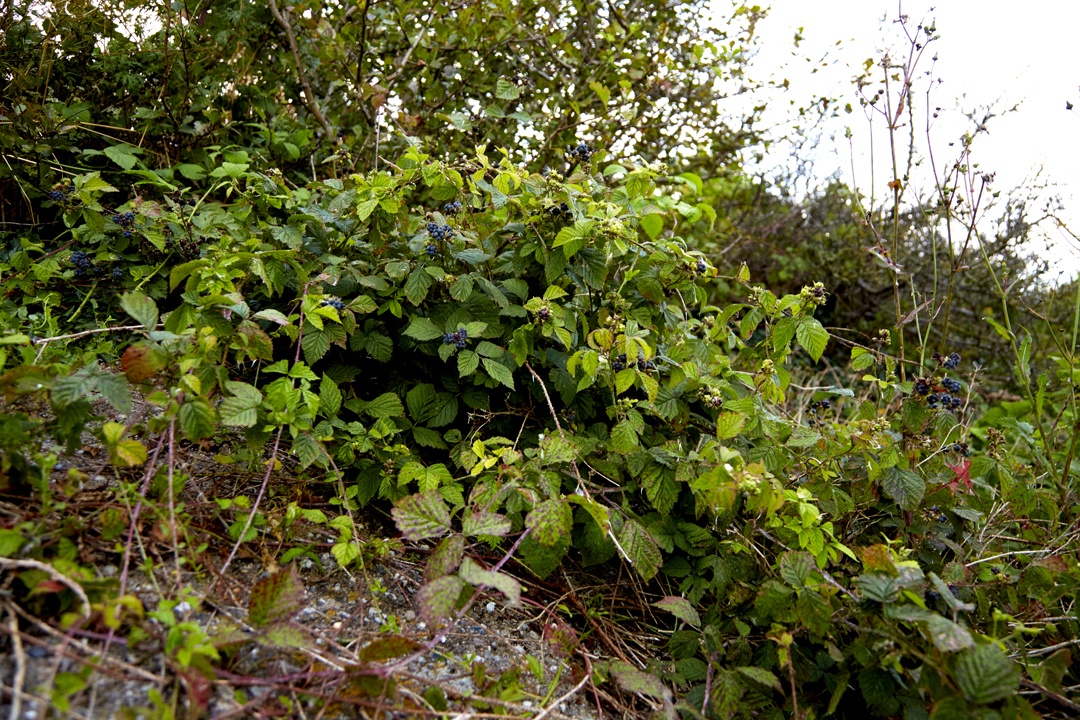
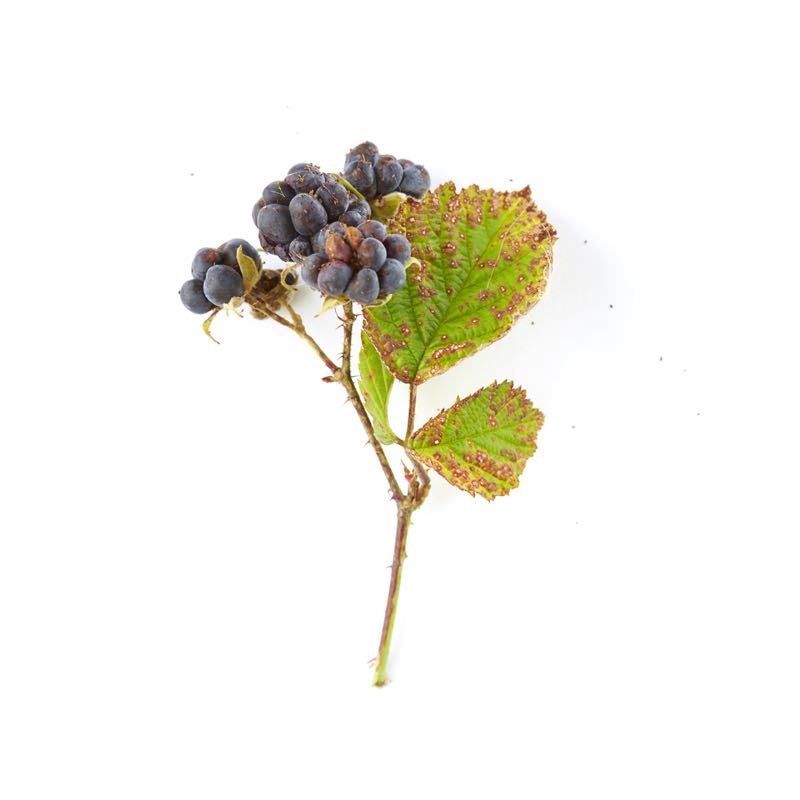
Dewberry
If blackberries are the king of the dark wild berries, then dewberries are the queen. In fact, they look like small, potent blackberries, and deserve a place in your jam jar.
-
Where to Find It
Dewberries grow wild in deciduous and coniferous forests, at the edge of woods, in pastures, hedges, and copses—anywhere the soil is a bit moist. Look for dewberries near stretches of coast and along ditches, creeks, and streams.
Salt marshes, deciduous forests, coniferous forests, towns, hedges, roadsides.
-
When to Find It
Dewberry flowers throughout summer, while its berries gradually ripen from July until the beginning of fall.
Berries: July, August, September.
-
How to Spot It
The dewberry plant often grows close to the ground and is composed of curved branches that can reach up to two meters in length. The bark on the young shoots is light green and shot with straight thorns, but as the plant ages, the branches turn brown and woody. The leaves are roughly toothed, and its white flowers grow on its long, thorny shoots. The berries are black with a thin layer of bluish, cloudy wax.
-
How to Pick It
Wear a good pair of gloves and clothing that covers you well when you go to pick dewberries—the thorns on the plant are no joking matter. As a rule, the first berries of the season are the best—they grow to be the biggest and sweetest.
Risk of misidentifying the plant
Dewberries look like blackberries, but a dewberry plant produces fewer fruits. The plant is also more slender, and its thorns, unlike the blackberry’s, are straight. The two plants have crossbred prodigiously (along with raspberries), so it’s not unusual to happen upon these hybrids in the forest.


